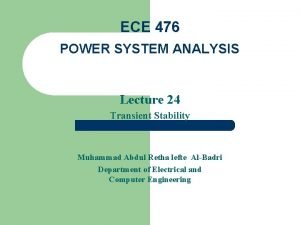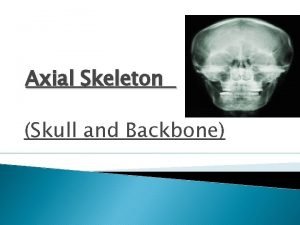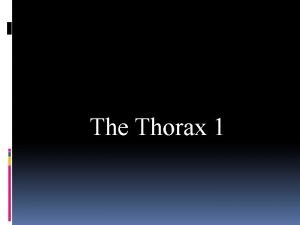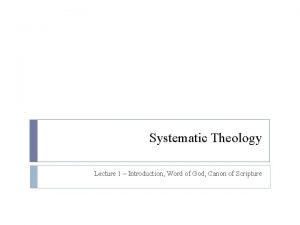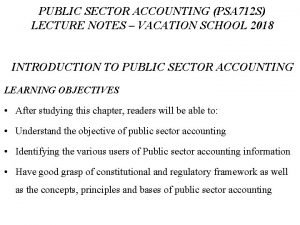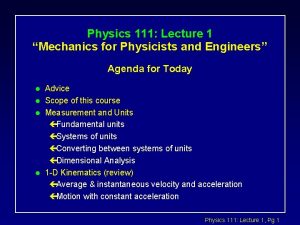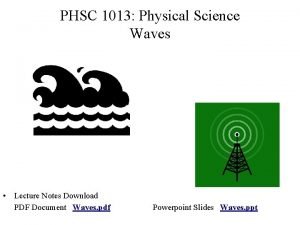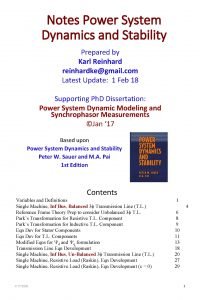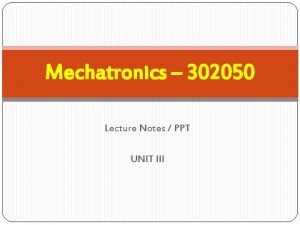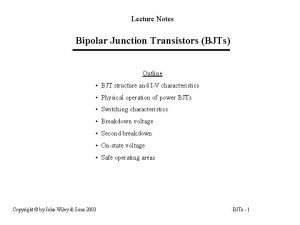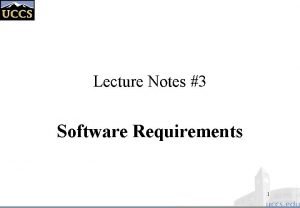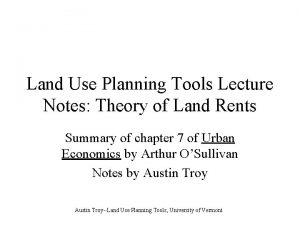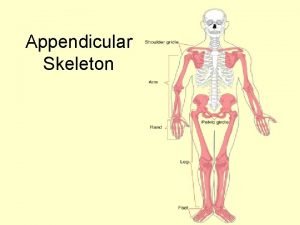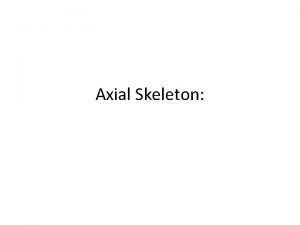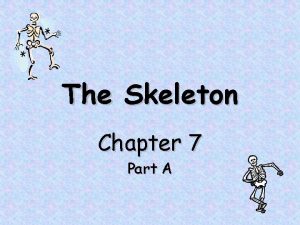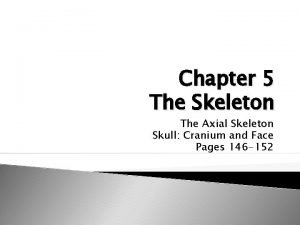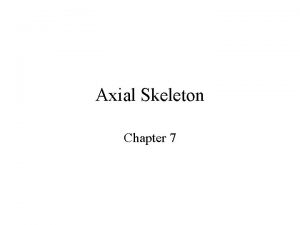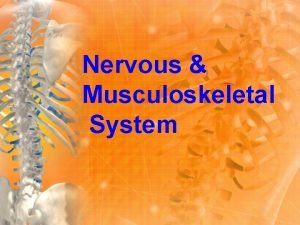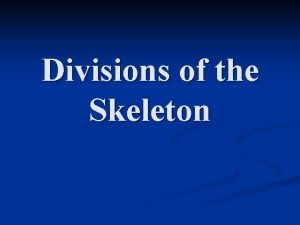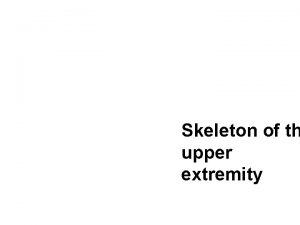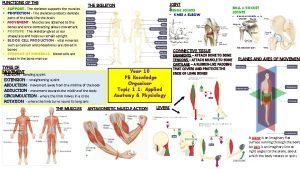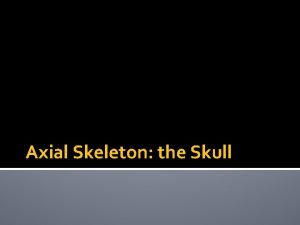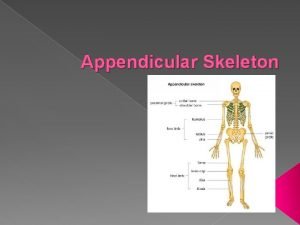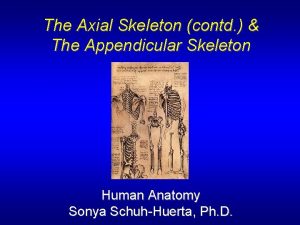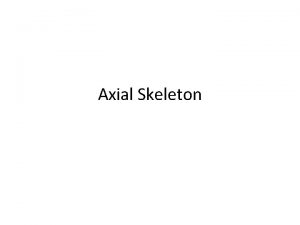Chapter 5 The Skeleton Lecture Notes Part C



















- Slides: 19

Chapter 5: The Skeleton Lecture Notes Part C

The Fetal Skull • The fetal skull is large compared to the infant’s total body length • Fontanels—fibrous membranes connecting the cranial bones • Allow the brain to grow • Convert to bone within 24 months after birth

The Fetal Skull Figure 5. 13 a

The Fetal Skull Figure 5. 13 b

The Vertebral Column • Each vertebrae is given a name according to its location • There are 24 single vertebral bones separated by intervertebral discs • Seven cervical vertebrae are in the neck • Twelve thoracic vertebrae are in the chest region • Five lumbar vertebrae are associated with the lower back

The Vertebral Column • Nine vertebrae fuse to form two composite bones • Sacrum • Coccyx

The Vertebral Column Figure 5. 14

The Vertebral Column • The spine has a normal curvature • Primary curvatures are the spinal curvatures of the thoracic and sacral regions • Present from birth • Secondary curvatures are the spinal curvatures of the cervical and lumbar regions • Develop after birth

The Vertebral Column Figure 5. 15

The Vertebral Column Figure 5. 16

A Typical Vertebrae, Superior View Figure 5. 17

Regional Characteristics of Vertebrae Figure 5. 18 a

Regional Characteristics of Vertebrae Figure 5. 18 b

Regional Characteristics of Vertebrae Figure 5. 18 c

Regional Characteristics of Vertebrae Figure 5. 18 d

Sacrum and Coccyx • Sacrum • Formed by the fusion of five vertebrae • Coccyx • Formed from the fusion of three to five vertebrae • “Tailbone, ” or remnant of a tail that other vertebrates have

Sacrum and Coccyx Figure 5. 19

The Bony Thorax • Forms a cage to protect major organs • Consists of three parts • Sternum • Ribs • True ribs (pairs 1– 7) • False ribs (pairs 8– 12) • Floating ribs (pairs 11– 12) • Thoracic vertebrae

The Bony Thorax Figure 5. 20 a
 01:640:244 lecture notes - lecture 15: plat, idah, farad
01:640:244 lecture notes - lecture 15: plat, idah, farad Axial skeleton vs. appendicular skeleton
Axial skeleton vs. appendicular skeleton Appendicular vs axial
Appendicular vs axial Axial skeleton vs appendicular skeleton
Axial skeleton vs appendicular skeleton Project procurement management lecture notes
Project procurement management lecture notes Theology proper lecture notes
Theology proper lecture notes Public sector accounting notes
Public sector accounting notes 4 p's of management spectrum
4 p's of management spectrum Magnetism
Magnetism Classical mechanics
Classical mechanics Physical science lecture notes
Physical science lecture notes Power system dynamics and stability lecture notes
Power system dynamics and stability lecture notes Microbial physiology and metabolism lecture notes
Microbial physiology and metabolism lecture notes Mechatronics lecture notes / ppt
Mechatronics lecture notes / ppt Limits fits and tolerances lecture notes
Limits fits and tolerances lecture notes Financial engineering lecture notes
Financial engineering lecture notes Bjt
Bjt Requirement analysis in software engineering notes
Requirement analysis in software engineering notes Introduction to ofdm
Introduction to ofdm Land use planning lecture notes
Land use planning lecture notes
